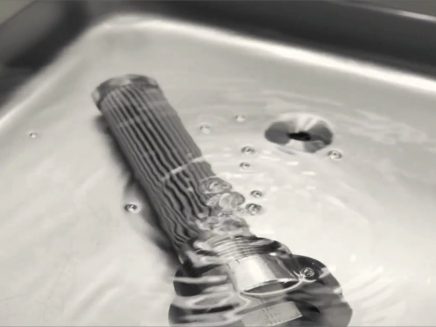Bubble point testing is the most basic and least expensive method of detecting and assessing leaks and determining the integrity of a membrane filter. Filter elements are regularly used for leak testing and functional testing of piping systems and their components in different industries.
PFC has been efficiently providing Bubble Point Test service to its clients under SAE ARP901.
Basic Test Principle
The bubble point test is used to characterize a particular membrane, and for testing the integrity of a membrane.
The test is based on the principle that the pressure required to force an air bubble through a pore is inversely proportional to the size of the pore or hole for a given fluid and membrane pore size. The theoretical relationship between bubble point pressure and pore size is explained by the Laplace equation (or Poiseulle's Law) for capillary tubes.
Bubble Point Test Method/Procedure
Though the American Society describes the process for a bubble point test for Testing and Materials (ASTM), it is explained below in laymen's terms.
First of all, the filter membrane to be tested is rinsed thoroughly so that Isopropyl Alcohol (IPA) fills all the voids in the filter media. Then gas pressure starting from zero is gradually applied at one side of the wetted filter.
The gas pressure is slowly increased until the pressure becomes strong enough to expel the Isopropyl Alcohol (IPA) from one or more passageways establishing a path for a bulk airflow. As a result, a steady stream of bubbles is seen exiting the submerged tubing.
The pressure at which this steady stream of bubbles is noticed is referred to as the bubble point, and this stream of bubbles indicates the existence of a small leak.
Test Assembly/Apparatus:
One needs the following assembly to perform the bubble point test:
- Nitrogen
- Pressure regulator
- Filter, Filter housing
- Isopropyl Alcohol (IPA) filled test tank
- Tubing
- Filter adapters
Test Considerations
PFC's technicians know that the accuracy of the test results depends on the correct test procedure. In that regard, there are a few key steps to ensure successful testing.
- Ensure that the filter is entirely and uniformly wet so that all the pores are filled with Isopropyl Alcohol (IPA). If the filter is dry, premature airflow will alter the steady flow of bubbles.
- The diffusive airflow through the filter will occur at a lower pressure than the bubble point. Therefore, ensure that pressure is recorded at the right moment of bubble stream formation.
Benefits of Bubble Point Test
Here are a few benefits of conducting a bubble point test:
- It is a non-destructive test and does not damage or harm to filter element.
- It gives a very accurate understanding of the integrity of the filter.
- Since it also tells you the largest pore size in the filter membrane, the bubble point test determines filter damage, ineffective seals, and system leaks. This is one of the vital factors from a manufacturer's point of view and a user.
Hire the Experts
Overall, the bubble point test is a quick, cost-efficient, and reliable form of integrity testing. Since it only requires manual measurements, it is a reasonably straightforward process. However, one needs to stick to the standards for estimating or confirming the acceptability of filter pores.
That said, PFCs well-qualified industrial cleaning and testing staff is trained and has access to ISO certified cleanrooms and test equipment to take precise measurements and account for possible variations in test results.
On top of that, our testing experts have a great understanding of ASME, SAE, ASTM, ISO, and other testing standards.

